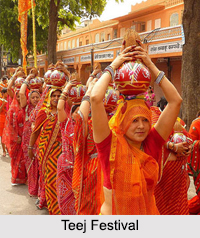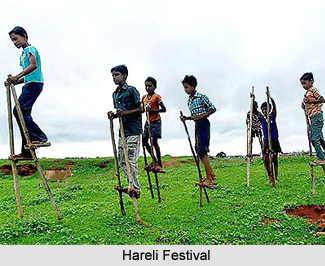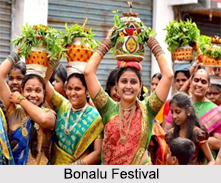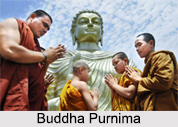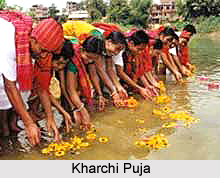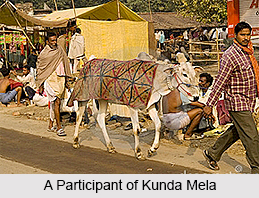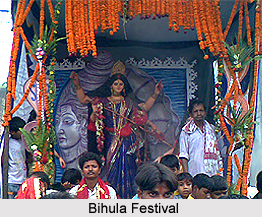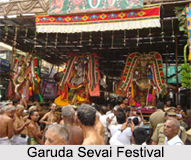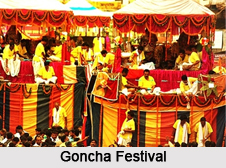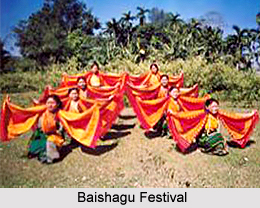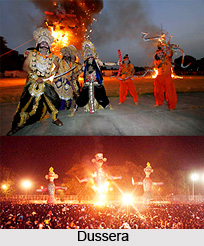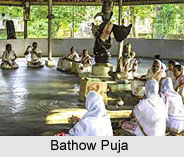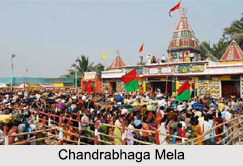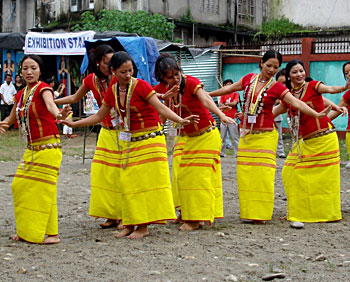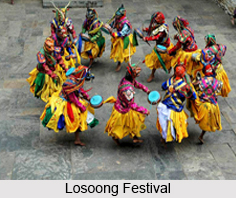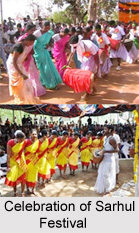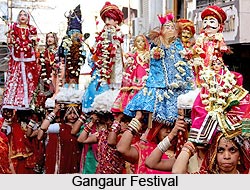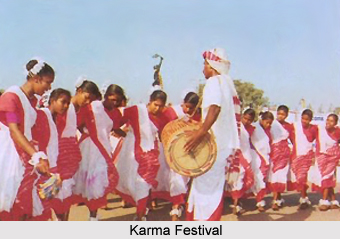It is believed that enlightenment is achieved by burning the person`s karmas through tapasya. Yajna is an integral part of tapasya since ages in Indian custom. Proper execution of a Yajna is necessary to attain enlightenment. Plenty of penance often heats up the mind of the Yajna performer but it is believed that if one can control his temper and passion the resultant enlightenment after the Yajna will make up for all the penance.
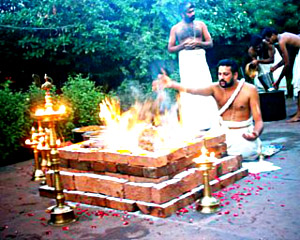 The basic quality of fire is to burn, thus according to Indian customs, the fire which is in the tongue burns whatever it speaks. It is said in the ancient scriptures that one should always confess the bad karmas and that will free the confessor from the evil deed. Fire purifies whatever it burns, but it takes on some of the qualities of whatever is offered to it. The purity of offerings to a Yajna starts with the wood used; the performer usually inspects each piece to make sure the wood for the fire contains no insects that might be cremated when it shall burn. All the offering materials for a Yajna should also be carefully sifted, screened and inspected to remove all kinds of dirt and insects before they were combined together into the final offering mixture, known as the `saamagri.` The stages in Yajna are very simple, but often the results are not fruitful because of the erroneous procedures.
The basic quality of fire is to burn, thus according to Indian customs, the fire which is in the tongue burns whatever it speaks. It is said in the ancient scriptures that one should always confess the bad karmas and that will free the confessor from the evil deed. Fire purifies whatever it burns, but it takes on some of the qualities of whatever is offered to it. The purity of offerings to a Yajna starts with the wood used; the performer usually inspects each piece to make sure the wood for the fire contains no insects that might be cremated when it shall burn. All the offering materials for a Yajna should also be carefully sifted, screened and inspected to remove all kinds of dirt and insects before they were combined together into the final offering mixture, known as the `saamagri.` The stages in Yajna are very simple, but often the results are not fruitful because of the erroneous procedures.
The choice of offerings in a Yajna depends on the objective, both spiritual and mundane, and also to worship fire generally. The primary things to offer in a Yajna are clarified as butter, wheat, barley, rice, sesame seeds, dry and fresh fruits, honey and sugar, combined together in a particular proportion. The amount of these ingredients differs in different kinds of Yajnas. All the ingredients are sweet because the performer of the Yajna wants the fire to give mundane prosperity as well as spiritual progression. Often sugar cane is added, which is specific according to the deities worshipped. Worshipping Ganesha is the first stage whenever any Yajna is performed. Besides, the mentioned articles, several Indian medicinal herbs are also added into the fire, which make the resulting ash that is applied as tilak on the forehead of the participants. This ash naturally has some medicinal properties.
The Yajna is done as part of the Six Rituals of Tantra. The rituals are performed to cause or to prevent death, hallucination, argument, hatred, obstruction, and enchantment. Each ritual in the stages of a Yajna requires a specific set of mantras, even clothing, and different worship materials like oil, chilies, salt, and other powerful, spicy substances. No one should perform Yajna without knowing the in depth details of its performance, since karma is involved. It is believed that there is no limit to the good or evil which can be done through worship of fire.
The ignition of fire in a Yajna is called `homa` which is begun by remembering an elderly person, especially the mother. Usually mother `Samshan Tara` is worshipped upon on the first place and then the biological mother is remembered. Then the Yajna performer remembers his respectable Rishi and recollects the Seven Rishis as a group, namely Pulaha, Pulastya, Devala, Kratu, Asita, Bhrigu and Angiras. While chanting several more mantras, the performer remembers various Gods and Goddesses, the planets, and all the demigods in charge of the village, home and the neighborhood. Finally, the Yajna performer makes offerings to all the other classes of unearthly beings like the Yakshas, Kinnaras, Gandharvas and Vidyadharas. More malevolent, like the Brahma Rakshasas and other spirits of the dead are also worshipped during the Yajna.
One of the most vital stages during the Yajna is to call upon the Agni, the God of fire and requests Him to enter the body of the Yajna performer and enkindle the Bhuta Agni. The Bhuta Agni is the fire of the subtle body, the fire that must be ignited in order for spiritual progress. One important reason for doing homa is to rouse Bhuta Agni. For the Bhuta Agni to enter the body, one must create the spiritual vacuum. To do that the performer offers his ears to the fire and ask for divine ears in return. When the person receives a positive response from the fire then he has to offer his eyes and ask for divine eyes. Next, he offers his tongue and asks for divine speech. Once Fire enters the body of the Yajna performer, he can proceed to do whatever work he has to do. Precisely, in homa the performer has to offer the senses into the fire and attain the energy of fire within his body. The nest stage of Yajna is to call upon the deity into the pit of fire and begin his offerings. As the homa proceed, the fire sometimes crackles, hisses or make other noises. This is the particular way in which the fire tries to talk. The performer can only understand this language if his perception is very subtle.
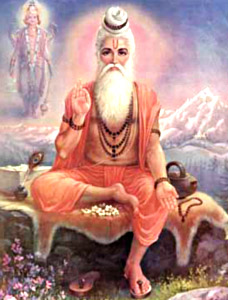 The fire tries to communicate with the Yajna performer in other ways also, for instance, the changing of the fire`s color is especially significant. Modem science has proved that each different color of light has a different effect on the body and mind, by stimulating the pituitary, pineal and hypothalamus, which later influences the rest of the organs. One color may cause anger, another joy, and the other may improve concentration. When the performer gets close to the fire chanting his mantras, the fire embraces him and then enters the body. The external fire of the Yajna acts as a barometer of the workings of the internal spiritual fire, the Bhuta Agni. However, the Yajna performer should bring the Bhuta Agni under control before he can completely control physical fire.
The fire tries to communicate with the Yajna performer in other ways also, for instance, the changing of the fire`s color is especially significant. Modem science has proved that each different color of light has a different effect on the body and mind, by stimulating the pituitary, pineal and hypothalamus, which later influences the rest of the organs. One color may cause anger, another joy, and the other may improve concentration. When the performer gets close to the fire chanting his mantras, the fire embraces him and then enters the body. The external fire of the Yajna acts as a barometer of the workings of the internal spiritual fire, the Bhuta Agni. However, the Yajna performer should bring the Bhuta Agni under control before he can completely control physical fire.
After all the offerings are made to the Yajna fire, at the very end of every homa, the performer has to offer coconut into the fire. The coconut represents the worshipper`s head, with its three eyes. The coconut should carry enough water that signifies the performer`s head is full of blood, cerebrospinal fluid and glandular secretions. While the performer offers the coconut, he dedicates his entire consciousness to the fire with a request that it be transmuted into a divine consciousness. Finally, the `homa` is completed and the performer sits by the fire for a while and commune with it.
Since, fire is a living being, once fire comes to life, the Yajna performer is responsible for the successful completion of his Yajna by following all the necessary stages. Any living being who does not understand its spiritual significance should not smother the fire. The Yajna performer must permit the fire to die out by itself. After the ash of the homa is collected, the area of Yajna should be washed thoroughly so that no holy ash is lying around and no one steps on the ash by mistake. The unused materials for the Yajna should be disposed off in water, specifically a stream, river, or the ocean. Another thing to be kept in mind while a Yajna is performed is if it seems that the fire is not dying out after the `homa,` it should never be blown directly. One should always blow on the palm of his hand first and let that air fall onto the fire.
The stages of a Yajna are simple and distinct, but any wrong step can lead to disastrous results. The Rishis or sages follow these stages after knowing the religious scriptures and their disciples still follow the rigid stages of Yajna to satisfy their deities. The steps to be followed while a Yajna is performed should be implemented with full dedication, honesty and sincerity.
